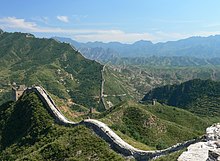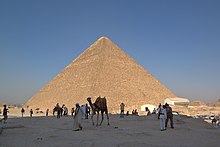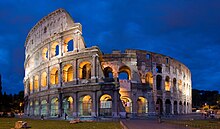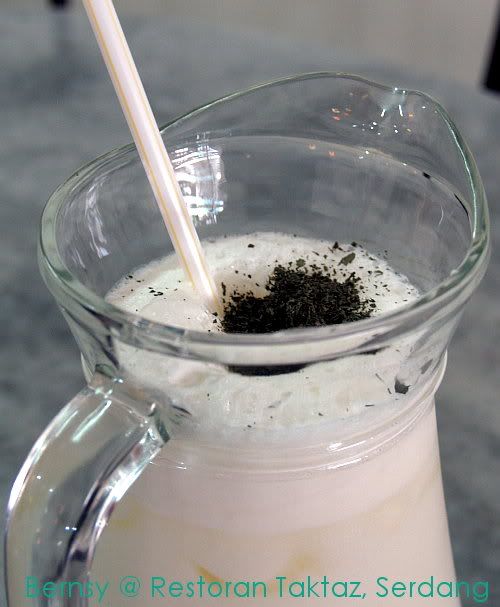Abstract: Roses are known as edible flowers and have been used for centuries as food component. This study used three analytical, statistical and experimental methods to compare antioxidant activity, chemical composition, and sensory characteristic of teas brewed from petals of various rose cultivars and the genetic variability of these parameters. Moreover the most suitable genotypes for utilization in preparation of the antioxidant beverage were identified. In the experimental method the selection of cultivars with edible flowers was made by field of tasting petal by means of 5 members of research team. Brewing procedure was used to steep the air-dry plant material in boiling water. In analytical method, the chromatographic analysis of teas was conducted with Shimadzu HPLC system. Meanwhile, Some statistical analysis such as: Quantitative Descriptive Analysis (QDA) and Analysis of Variance (ANOVA) were used to examine the effect of cultivar on the sensory characteristic of rose petal teas. In this study no direct relationship was found between the sensory characteristic of rose teas and their antioxidant activities or phenol contents, but the teas prepared from different rose cultivars varied significantly in their sensory characteristics and this can be determined by the presence of specific taste and aroma-forming constituents. Rose petal teas have acceptable sensory characteristics and may serve as a caffeine free beverage with high antioxidant capacity. Radical-scavenging activity in this rose tea is mostly due to high content of phenolic compounds in free gallic acid.
Wonderful World
Thursday, October 13, 2011
Wednesday, January 26, 2011
DIABETES MELLITUS
Maintenance of an adequate supply of glucose in the blood is essential for the proper functioning of neuronal cells. This task is accomplished by two hormones produced by the pancreas: insulin and glucagon. Glucose homeostasis is a physiologically well-balanced mechanism depending on three coordinated and simultaneously ongoing processes involving insulin secretion by the pancreas, glucose production in the liver and, uptake of glucose by peripheral tissues (mostly muscle tissue). Insulin secretion is modulated such that glucose production and utilization rise or fall to maintain normal blood glucose levels. [2] This diagram below shows how insulin and glucagon control blood glucose homeostasis.
Figure 1: Homeostasis of Insulin and Glucagon in Controlling Blood Glucose
Insulin reduces blood glucose and fatty acids by facilitating entry of glucose into the cells of target tissues and helping to convert these substances for storage as glycogen, triglycerides, and protein. Glucagon works to preserve glucose and fatty acids from conversion and to increase glucose output by the liver. Insulin and glucagon (along with other hormones) balance the over all levels of glucose and fatty acids in the blood to maintain a steady state. Dysfunction in glucose metabolism is generally the result of either deficiencies or excess in these hormones, as well as resistance to hormone action by target tissues. [2]
The inability to secrete adequate amounts of insulin is known as type 1 diabetes mellitus caused by the reduction in the beta cell mass. This disorder usually develops in childhood, becoming manifest and severe at puberty. Generally patients require multiple daily injections of insulin to maintain blood glucose levels. Without insulin, they develop acute metabolic complications, such as ketoacidosis and coma. Its etiology appears to involve three interlocking mechanisms: genetic susceptibility, autoimmunity, and environmental insult, these factors are responsible for the islet cell destruction. [3,5]
Much less is known, about the pathogenesis of non-Insulin-Dependent (type2) diabetes, which is by far the most common type that results from the body's inability to make enough or properly use insulin. The causes are largely unidentified genetic factors and the effects of unhealthy lifestyle, People suffering from this disorder are usually overweight and even obese.

Figure 2: Some of the warning signs and symptoms of type 1 and 2 diabetes
Some of the warning signs and symptoms of type 1 and 2 diabetes are summarized below
type 1 diabetes
Frequent urination.
Unusual thirst.
Extreme hunger.
Unusual weight loss.
Extreme fatigue
Irritability.
type 2 diabetes
Any of the type 1 symptoms, plus.
Frequent infections.
Blurred vision.
Cuts/bruises that is slow to heal.
Tingling/numbness in the hands or feet.
Recurring skin, gum, or bladder infections
Diabetes mellitus is now a major global public health problem. The prevalence of diabetes is noted to vary with ethnicity. However, the developing and newly industrialized nations, and the disadvantaged community groups in the developed countries are said to be at highest risk of having diabetes. It has also been demonstrated that as age increases, the risk of having diabetes and hence the prevalence of diabetes increases. There are several approaches employed to reduce risk for diabetes. To reach the greatest success in reducing the incidence and prevalence of diabetes, both a high risk and a population-based approach should be employed. Pharmacologic therapy or lifestyle modification programs can be used to prevent the risk for development of type 2 diabetes. However, lifestyle modification should be considered first-line therapy. Life style modifications aimed at losing weight, getting more exercise and include establishing and maintaining healthy lifestyle behaviors (e.g. diet and physical activity) and achieving and maintaining a healthy body weight. Knowler. Et al. (2002).
Reference
Dr. Rugayah Bakri. Diabetes Epidemic in Malaysia.(2007) Persatuan Diabetes Malaysia- Phillip M. Kleespies . 2000. Emergencies in Mental Health Practice: Evaluation and Management. Guilford Press. Diabetes mellitus p-343.
Glucose Homeostasis and Diabetes. Available at [http://www.pharmainfo.net/reviews/glucose-homeostasis-and-diabetes][ accessed July 11, 2010] .
Günter Klöppel and Andreas Clemens. (2007). Insulin-dependent diabetes mellitus: Islet changes in relation to etiology and pathogenesis. Endocrine Pathology, vol.8, No.4, 273-282.
Ramzi S.Cotran, Stanley L. Robbins , Vinay Kumar. (1994). Pathologic basis of disease . 5th edition. Saunders Company.- Health Matters: Diabetes, http://worldradio.ch/wrs/programmes/health/health-matters-diabetes.shtml?12768, accessed on 11 July 2010 By hamideh talei farkhondehBiotechnology DepartmentFaculty Of Applied ScienceUCSI University, Malaysia
Tuesday, January 25, 2011
Seven Wonders of the Ancient World

The historian Herodotus (484 – ca. 425 BCE), and the scholar Callimachus of Cyrene (ca. 305 – 240 BCE) at the Museum of Alexandria, made early
lists of seven wonders but their writings have not survived, except as references. The seven wonders included:
- Great Pyramid of Giza
- Hanging Gardens of Babylon
- Statue of Zeus at Olympia
- Temple of Artemis at Ephesus

- Mausoleum of Maussollos at Halicarnassus
- Colossus of Rhodes
- Lighthouse of Alexandria
The earliest lists had the Ishtar Gate as the seventh wonder of the world instead of the Lighthouse of Alexandria.
The list known today was compiled in the Middle Ages—by which time many of the sites were no longer in existence. Today, the only ancient world wonder that still exists is the Great Pyramid of Giza.

Color Psychology: How Colors Impact Moods, Feelings, and Behaviors
By Kendra Cherry, About.com

While perceptions of color are somewhat subjective, there are some color effects that have meaning. Colors in the red area of the color spectrum are known as warm colors and include red, orange and yellow. These warm colors evoke emotions ranging from feelings of warmth and comfort to feelings of anger and hostility.
Colors on the blue side of the spectrum are known as cool colors and include blue, purple and green. These colors are often described as calm, but can also call to mind feelings of sadness or indifference.
Color Psychology as Therapy
Several ancient cultures, including the Egyptians and Chinese, practiced chromotherapy, or using colors to heal. Chromotherapy is sometimes referred to as light therapy or colourology and is still used today as a holistic or alternative treatment.
In this treatment:
- Red was used to stimulate the body and mind and to increase circulation.
- Yellow was thought to stimulate the nerves and purify the body.
- Orange was used to heal the lungs and to increase energy levels.
- Blue was believed to soothe illnesses and treat pain.
- Indigo shades were thought to alleviate skin problems.
Most psychologists view color therapy with skepticism and point out that the supposed effects of color have been exaggerated. Colors also have different meanings in different cultures. Research has demonstrated in many cases that the mood-altering effects of color may only be temporary. A blue room may initially cause feelings of calm, but the effect dissipates after a short period of time.
IRANIAN FOODS
- Chelow Kebab: It is the most famous and delicious cuisine in Iran.
It is made of rice(Chelow) and grind meat, lamb or beef (Kabab). - Kabab has different kind with different taste. Like: Barg, Koobideh, Soltani, Chenjeh.


- Albalu Pollow: rice with black cherry and chickenand additional nuts which depend on your taste
- Loobia Pollow: rice with meat and beans( kidney beans or wax beans).
- Sabzi Pollow: rice with meat usually fish and especial vegetables (leek, tarragon, sweet basil and dill).
Next dish is "Khorosht" or stew which is served with rice or "Berenj".
- Khorosht-e Ghorme Sabzi: cooked vegetables with chopped meat, kidney beans and additional spices like turmeric, pepper and salt.
- Khorosht-e Gheimeh: split pea ,meat ,potatoes and spices like turmeric, pepper and salt and ketchup and a little lemon.
- Khorosht-e Bademjan: fried eggplants, meat, tomato and spices like salt, pepper, turmeric and ketchup.
The other one is "Kookoo" and "Kotlet"
- Kookoo: is a mixture of some vegetables like parsleys and leek and any one that you like and chopped onion with an egg which are fried in oil.
- Kotlet: is a mixture of grind meat with an egg and chopped onions and spices which like kookoo it is shaped whatever you like usually oval-shaped.
Iran has also different kinds of salads and non-alcoholic drinks such as:
potato salad, Shirazi salad (mixture of cucumbers, tomatoes and onions with virulence ,salt and pepper),

Iran has many kinds of bread (that called Nan) but four of them are very famous:


- Nan-e Barbari: thick and oval-shape bread
- Nan-e Sangak: triangle-shape bread
- Nan-e lavash: thin, crispy and round or oval-shape bread.
- Nan-e taftun: thin, but thicker than lavash.
"Aash" and "Abgusht" or "Dizi" are other foods.

- Aash: is mixture of grains, meat and some vegetables like: Aash-e reshte, Aash-e doogh…
- Abgusht or Dizi: is a kind of Aash but it has lamp in it with potato and pea and some times beans and tomato sauce.
The Google College Rankings: Malaysian Top Universities
By GCR Editor
http://googlecollegerankings.com
The population of Malaysia is more than 25 million, and the country has a growing higher-education sector. What can we discover about the rankings of Malaysian universities by using Google?
If we do an English-language search first, asking google.com.my to return results for the word university, we get this top-ten listing:
- University of Malaya
- Open University Malaysia
- Universiti Teknologi Malaysia (UTM)
- University Putra Malaysia
- Multimedia University
- Sunway Campus, Monash University
- Malaysia Campus, University of Nottingham
- Universiti Tunku Abdul Rahman
- HELP University College
- International Islamic University Malaysia
As always, this ranking is prepared with a clean browser, so pre-established Google-preferences don’t influence the result, and it is assembled using light bio-neural filtering.
It’s interesting to see the second-ranking institution here is an open university—largely online, and catering to non-traditional students. Open University Malaysia is less than ten years old and already has more than 70,000 students, “a record of some sort.” Given that Google’s ranking system depends upon a large interlinked web presence, and on external links pointing to the institution’s own pages, it isn’t surprising that a university with a big online division would rank highly. We may well see this pattern intensify as time goes on.
If we switch from English to Bahasa Malaysia and search for the word universiti, we get quite a different ranking:
- Universiti Sains Malaysia
- Universiti Putra Malaysia
- University Kebangsaan Malaysia (UKM)
- Universiti Teknologi MARA (UiTM)
- University of Malaya
- Universiti Teknologi PETRONAS
- Universiti Teknologi Malaysia
- Universiti Pedidikan Sultan Idris
- Universiti Darul Iman Malaysia
- Multimedia University
Most of these institutions may not care whether they rank highly on English-language searches for the word university rather than universiti, but a simple change to the HTML title of their home pages that added the English name after the Bahasa Malaysia name—such a change might well put them in the top ten for both languages, increasing their international exposure.
2010 Quality of Life Index: 194 Countries Ranked and Rated to Reveal the Best Places to Live
By the Staff of International Living
1. France
 For the fifth year running, France takes first in our annual Quality of Life Index. No surprise. Its tiresome bureaucracy and high taxes are outweighed by an unsurpassable quality of life, including the world’s best health care.
For the fifth year running, France takes first in our annual Quality of Life Index. No surprise. Its tiresome bureaucracy and high taxes are outweighed by an unsurpassable quality of life, including the world’s best health care.
France always nets high scores in most categories. But you don’t need number-crunchers to tell you its bon vivant lifestyle is special. Step off a plane and you’ll experience it first-hand.
I always wish quality of life indicators could measure a country’s heart and soul. But it’s impossible to enumerate the joy of lingering for hours over dinner and a bottle of red wine in a Parisian brasserie. Or strolling beside the Seine on a spring morning, poking through the book vendors’ wares. Or buying buttery croissants in bohemian Montmartre…hearing Notre Dame’s bells…walking antique streets paved with poetry.
Romantic Paris offers the best of everything, but services don’t fall away in Alsace’s wine villages…in wild and lovely Corsica…in lavender-scented Provence. Or in the Languedoc of the troubadors, bathed in Mediterranean sunlight.
Provincial French properties are often keenly priced and lifestyles are less expensive than Paris. The Southwestern Midi-Pyrenees region is a particularly good hunting ground for village homes for less than $100,000—and classic three-course lunches for $14. Houses cascade with wisteria blossom; outdoor markets are everywhere. Foie gras, pink garlic, Armagnac, and crystallized violets aren’t gourmet fare for locals. Rather, just another day’s shopping.
2. Australia
 They don’t call it the “Lucky Country” for nothing. Australia is famous for its large beaches and temperate climate. Across the continent, Aussies and those who’ve chosen to emigrate there have access to an active and healthy lifestyle. But urban dwellers will find plenty of great culture and excellent food in Sydney and Melbourne, and a cost of living below that of some of the world’s other great cities.
They don’t call it the “Lucky Country” for nothing. Australia is famous for its large beaches and temperate climate. Across the continent, Aussies and those who’ve chosen to emigrate there have access to an active and healthy lifestyle. But urban dwellers will find plenty of great culture and excellent food in Sydney and Melbourne, and a cost of living below that of some of the world’s other great cities.
Australia’s economy has managed to weather the Global Financial Crisis better than any other Western country. For tourists and travelers, this means you’ll be dealing with a strong Aussie dollar, making your visit there more expensive. But if you plan to stay, you’ll find that few English-speaking countries with quality health care and good infrastructure will benefit as much as Australia from the economic booms in Asia and China.
The Australian economy is powered by agricultural, mineral, and energy exports that feed the voracious appetite of rapidly industrializing populations in Asia. Housing in Australia remains expensive by global standards. But there are plenty of jobs for skilled expats who can ride the Asian boom from the sandy, sunny, and safe beaches of the land Down Under
3. Switzerland
For Harry Lime, in Graham Greene’s story The Third Man, all the Swiss have to show for five centuries of peaceful neutrality is the cuckoo clock. The rest of Europe, meanwhile, stumped on through rivers of blood to create art, history, and civilization.
This is rubbish. Switzerland is an award-winning country because it turned all its natural disadvantages to its own advantage, ending up as a super-efficient, high-tech society while still managing to play Alpine inn-keeper to the world. Moreover the cuckoo clock comes from the Black Forest in Germany.
Lacking natural frontiers or a unifying religion, and divided by five different languages, it sensibly decided that internationalism was its calling, quickly adding English to the French, German (two kinds), Italian, and Romansch (like ancient Latin) its people already speak so that foreigners of every linguistic persuasion could feel at home. Altruism followed from this and Geneva became home to the United Nations and the Red Cross.
Landlocked, mountainous, and without natural resources (except cheese), Switzerland still needed more than tourism to provide a living. So it developed secretive banks, whose potential clientele is numberless and efficient engineering and pharmaceutical industries whose appeal similarly knows no borders.
Such achievements reinforce each other. Tourists gladly clamber into Alpine cable cars because they trust their Swiss steel cables and electric motors. Jump on a Swiss train and you know you will arrive on time. Swallow a Swiss pill and you know it won’t poison you. Likewise, you know the bank will always be discreet and the hotel room spotless. You also know everyone will speak your language. The Swiss succeeded because they made everything work.
4. Germany
 Some Americans (often ex-military) retire to Germany. One forum poster mentioned being thrilled that youth culture hasn’t taken over. Techno-throb Berlin and numerous summer rock festivals refute that, but this is the land of Goethe and Beethoven. Theater, art, and classical music concerts aren’t considered elitist.
Some Americans (often ex-military) retire to Germany. One forum poster mentioned being thrilled that youth culture hasn’t taken over. Techno-throb Berlin and numerous summer rock festivals refute that, but this is the land of Goethe and Beethoven. Theater, art, and classical music concerts aren’t considered elitist.
Will your medical insurance fund a health spa stay? Probably not, but it happens here with a doctor’s recommendation. Despite the global downturn, Germans have it pretty good. Along with 30 days paid annual holiday, the average employee earns €41,509 ($61,433).
In Germany, everything works and works well. Its houses are built to last, and their legendary autobahns are still mostly without speed limits. If you enjoy sports, even small towns have numerous facilities. Some odd ones too—the Harz Mountains now has a specialist hiking trail for nudists. From spas to parks to North Sea beaches, Germany is arguably the world’s most naturist-friendly country.
Romantics adore its Christmas markets and fairytale towns of half-timbered houses. Some favorites are Quedlinburg and Wernigerode in Saxony, and the Black Forest spa town of Baden-Baden. The latter has a posh reputation, but you could buy a 55-sqaure-meter apartment for $160,000. Or rent for $673 monthly.
5. New Zealand
 From Auckland’s waterfront to the Southern Alps, English-speaking New Zealand boasts some of the most pristine landscapes on earth. Much of the Lord of the Rings movie trilogy was filmed here. For younger migrants with the right skills, it’s a wonderful place to relocate and raise a family. There’s huge emphasis on sports, beach-life, and healthy lifestyles.
From Auckland’s waterfront to the Southern Alps, English-speaking New Zealand boasts some of the most pristine landscapes on earth. Much of the Lord of the Rings movie trilogy was filmed here. For younger migrants with the right skills, it’s a wonderful place to relocate and raise a family. There’s huge emphasis on sports, beach-life, and healthy lifestyles.
New Zealand’s immigration department sums up the attractions perfectly. “In many ways it’s not what we have that’s important to our quality of life—it’s what we don’t have. We don’t have high crime rates, our police don’t carry guns and instances of corruption are virtually unheard of. We don’t have abject poverty or hunger and we don’t have the pollution, congestion, health issues and cramped city living that we see elsewhere.”
Unless you buy your way in as an investor, it’s difficult for retirees to get permanent residency. But you could rent or purchase a home and live there part-time. Seasons are reversed, so it’s possible to enjoy two summers a year. However, property prices are rebounding. Taken nationally, latest figures show the average home costs $274,881.
6. Luxembourg
 If we judged quality of life by a nation’s Michelin-starred restaurants per square mile, the winner would be the Grand Duchy of Luxembourg. A founder member of the EU, its national motto is Mir wëlle bleiwe wat mir sin (we want to remain what we are).
If we judged quality of life by a nation’s Michelin-starred restaurants per square mile, the winner would be the Grand Duchy of Luxembourg. A founder member of the EU, its national motto is Mir wëlle bleiwe wat mir sin (we want to remain what we are).
Only 51 miles long and 35 miles wide, landlocked Luxembourg is relatively unknown to Americans. Yet with per capita GDP of $88,000, it’s among the world’s richest countries. Most apartments in its postcard-pretty capital—also called Luxembourg—cost at least $7,400 per square meter. But they come with an operetta scene of medieval turrets, bridges, and flower-filled squares.
Ruled by a Grand Duke, a third of Luxembourg’s 420,000 inhabitants were born elsewhere. Add cross-border workers, and foreigners account for 60% of its labor force. Although the official language is Lëtzebuergesch, English, French, and standard German are widely spoken—cosmopolitan Luxembourg is an international finance center and tax haven. However, its bank secrecy laws are now under scrutiny
7. United States
 From Florida’s palm-lined coasts to Alaska’s snow-covered crags…from the dazzle of New York to the big skies of Montana…the U.S. has, arguably, something to offer everyone.
From Florida’s palm-lined coasts to Alaska’s snow-covered crags…from the dazzle of New York to the big skies of Montana…the U.S. has, arguably, something to offer everyone.
And no question: It is the land of convenience. No place else on Earth is it easier to get what you want, when you want it.
The U.S. is safe. It’s comfortable. It can even be affordable. As readers will on occasion point out: It’s possible to rent a place in central Nebraska for the same price you’ll pay in Merida, Mexico. (Though that does beg the question: There amid the cornfields, can you see the opera, enjoy the café culture, or be at the beach in half an hour?)
It’s hard to beat the day-to-day ease you enjoy in the U.S. You can buy eye drops at a pharmacy at 3 a.m. and have dinner delivered to your door in 30 minutes or less. We are efficient. (And, if you’ve ever tried to shop on a Sunday in France or get a driver’s license in Italy in under 45 days, you appreciate the merits in that.) But—as our editors and readers living overseas are quick to point out—convenience (and the frenetic pace that comes with it) is often overrated.
8. Belgium
 Divided into Flemish-speaking Flanders and French-speaking Wallonia, Belgium also boasts high scores. Since medieval times, its merchant cities have prospered. The capital, Brussels, grabs most attention, but Bruges and Antwerp (famed for diamond trading) also flaunt stepped-gable houses and splendid guildhalls.
Divided into Flemish-speaking Flanders and French-speaking Wallonia, Belgium also boasts high scores. Since medieval times, its merchant cities have prospered. The capital, Brussels, grabs most attention, but Bruges and Antwerp (famed for diamond trading) also flaunt stepped-gable houses and splendid guildhalls.
Employing thousands of foreign staff, Brussels is the headquarters of the European Union and NATO. A dreary place of paper-shuffling bureaucrats? Not at all.
Ringed with parks, it’s Europe’s greenest capital. Along with many international schools, it delivers all an expat could desire: theater, English-language cinema, sports centers, great public transport, Trappist-brewed beers, numerous gourmet and ethnic restaurants, and fast trains to London, Paris, and Amsterdam. As they rarely plan to stay, most expats rent. In central Brussels, one-bedroom apartments start at $740 monthly.
Like its delectable chocolates, Brussels has a soft-centered heart. The municipality not only sterilizes stray cats, it appoints someone to feed them. Its main library offers storytelling in sign language for deaf children. And disadvantaged citizens can attend cultural events at hefty discounts.
9. Canada
 Stretching from the islands of Newfoundland and Nova Scotia in the east to Vancouver Island in the west and north to the Arctic Circle, Canada is a diverse country of incredible natural beauty and resources.
Stretching from the islands of Newfoundland and Nova Scotia in the east to Vancouver Island in the west and north to the Arctic Circle, Canada is a diverse country of incredible natural beauty and resources.
Health care and living standards are among the highest in the world. Canada’s economy is based on vast natural resources, a robust financial industry, and innovative manufacturing including the renewable energy sector. Canada has remained resilient through the global financial crises. The banks are considered “more Swiss than the Swiss banks,” and property markets are “on fire.”
Canada’s major cities (like Toronto and Vancouver) offer fantastic entertainment. Sports, theater, and concerts are widely accessible and affordable and there’s a rich offering of free festivals.
Cost of living is affordable, although the strong currency has made it relatively more expensive in recent times. Canada’s real attraction comes in the form of nature and outdoor activities. In summer, there’s hiking, boating, golf, and fishing. Winter offers outdoor activities like skiing, snow mobiling, and ice fishing. Canadians are warm, welcoming, and fun, and the country still retains many of the charms brought by her early visitors from Europe.
10. Italy
 What Italians don’t know about la dolce vita (the sweet life) isn’t worth knowing.
What Italians don’t know about la dolce vita (the sweet life) isn’t worth knowing.
OK, trains are often in ritardo (late), workers frequently strike, corruption isn’t unknown, and red tape comes in slow-moving triplicate. But balance that against Rome, Venice, and Florence…against mountains reflected in sapphire lakes…against golden beaches and hill towns cobbled with secrets.
Then throw in 60% of the world’s art treasures. A national health care system rated second in the world by the WHO. Sunflowers, vineyards, and opera. And the best espresso, pizza, and ice cream you’ll ever taste.
Admittedly, major cities and tourist hotspots are expensive. But the Mezzogiorno, Italy’s deep south, is different. Although unemployment is high and incomes far less than in the north, it’s just as colorful. As historic, too. Phoenicians, Greeks, and Saracens all left traces of their passing.
Southern winters are short and mild, summers are scorching hot, and jugs of wine cost $6.50. On Sicily and in slow-paced regions like Puglia, Basilicata, and Campania, affordable homes abound. Even farmhouses with a couple of acres surface for $60,000. Many village houses cost even less. Decent rentals start at $550 monthly.

